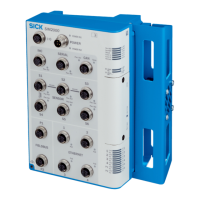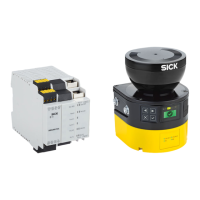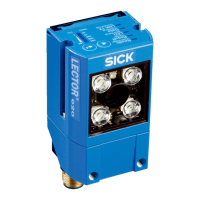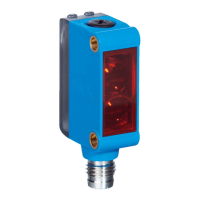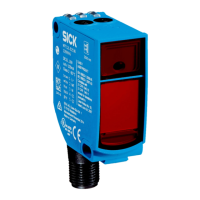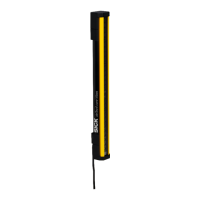•
R
esolution (detection capability)
•
Type of approach
•
Switching time between monitoring cases
•
Parameters specified based on the application
•
Supplements for general and, possibly, reflection-based measurement errors (only
for hazardous area protection)
•
Supplement for protection against reaching over (only for hazardous area protec‐
tion)
•
Supplement to prevent reaching through (only for access protection)
Complementary information
Mor
e information is available in the ISO13855 standard and in the Guide for Safe
Machinery from SICK.
SICK offers a stopping/run-down time measurement service in many countries.
4.3.10 Hazardous area protection
Hazardous area protection
T
he safety camera sensor is mounted in a stationary application, for example on a
machine where the hazardous area is not completely surrounded by a physical guard.
When used for hazardous area protection, the camera sensor detects the person. The
camera sensor is mounted in such a way that the protective field scans the immediate
hazardous area around a machine and detects an approaching movement. The camera
sensor can be arranged horizontally or vertically for this purpose.
To monitor the largest possible area, vertical arrangement of the camera sensor and
use of the Increased scanning range mode are suitable.
Figure 19: Hazardous area protection
Complementary information
Mar
king the course of the protective field boundaries on the floor is recommended. By
doing this, you allow operating personnel to see the protective field boundaries and
make it easier to test at a later date.
PROJECT PLANNING 4
8025919/1I9E/2023-01-09 | SICK O P E R A T I N G I N S T R U C T I O N S | safeVisionary2
29
Subject to change without notice
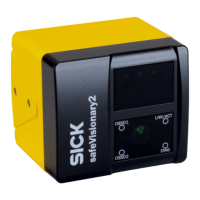
